Bala is a round, jolly young man with a very dark complexion and always smiling. Today he is showing us the nearby Zainab Saidu Usman D/Gari Orphanage, where he spent most of his childhood, but still was motivated enough to educate himself and avoid falling into the begging trap as so many disadvantaged do. Also with us is Mariam, a very tall twenty three year old wearing a cerise pink hijab. She also grew up in the orphanage. In a moment of madness and for reasons known only to herself, her mother decided to literally burn her infant feet, and so Mariam now lives life as a double amputee with scarred stumps, managing day to day using hand made leather shoes, which in reality are more like cups, and of slightly different sizes. She would benefit greatly from bespoke orthapaedic shoes that only specialists can provide.
I can’t help wondering how she’s managed all this time.
Set in several hundred square metres of ground large enough for a few trees and for growing some crops, the main building is raised above ground level by a few steps and consists of a single story square layout with a central open air courtyard. One of the dorms serves as a dayroom, with children from toddlers to teens watching tv or sleeping, sitting or lying on the bunk beds or on the bare tiled stone floor. There are forty children here, the older ones go out for the day but there is little to occupy the younger ones. One baby, asleep in a cot cleverly fashioned from steel bars and tubes and softened with two colour basketry contained a baby that had just recovered from malnutrition, looking a little thin in the arms and legs but we were assured she was out of danger.

Another room was for babies, mostly sleeping in their cots. There are only two full time staff looking after all these youngsters, and they do their best. The roof leaks in places producing large stains and bowed ceiling tiles, and the air is stale and thick. Replacing all the bedding and redecorating throughout would be a good thing, followed perhaps by a rota of chores for the older kids which would help out the staff while giving them some routine and a sense of responsibility, certainly better than sitting around all day watching western tv.
Outside in the sandy yard washing is hanging on the line strung between two trees and cooking takes place over an open fire, pots large and small and the traditional wooden pestle and mortar for pounding yams (called an Odo) are strewn about. Most of the grounds look a little neglected, and the children could be actively involved in projects that could improve their environment, such as a kitchen garden or safe play area, or decorate the dorms and dark corridors with their artwork. Some of the grounds are used to cultivate crops, but the children receive no benefits from this. At the moment at least, it appears that nobody cares that much, at least they are all off the streets.
We come away with plenty to think about.
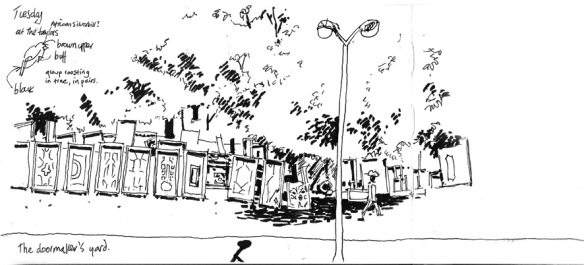
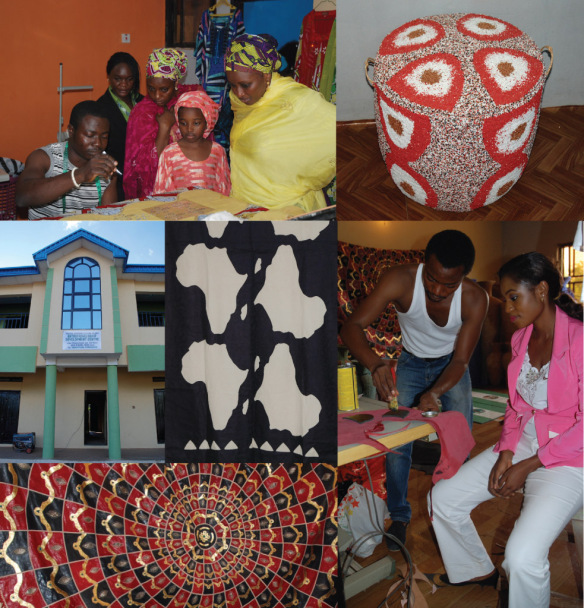


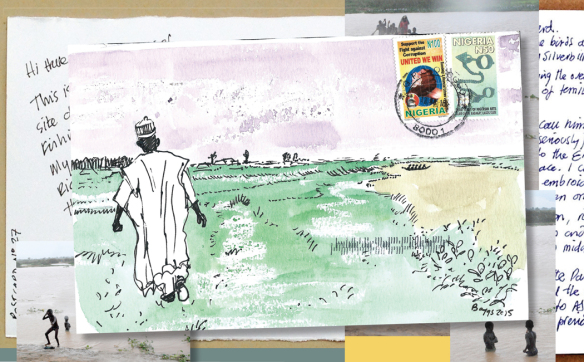

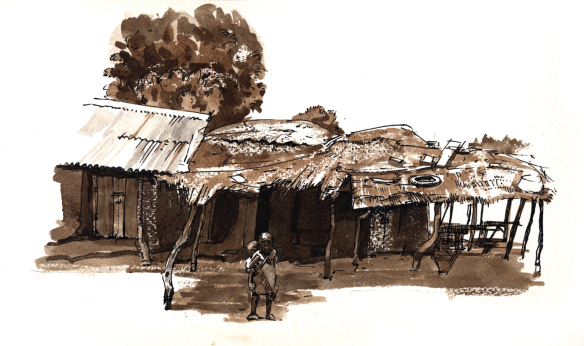
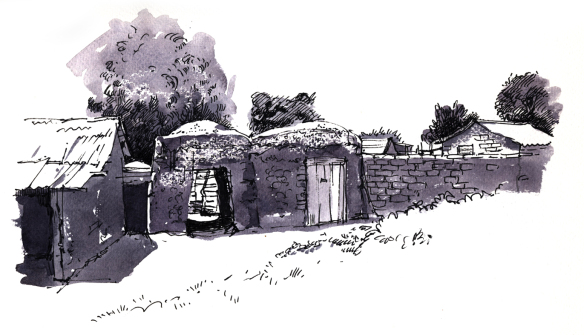
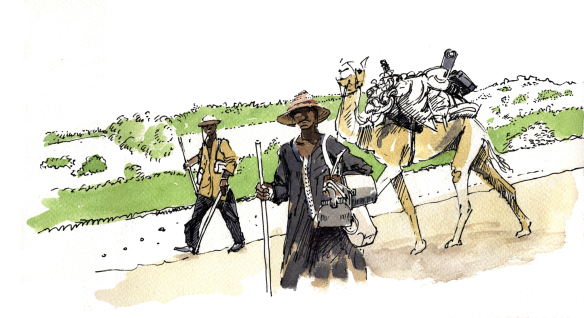
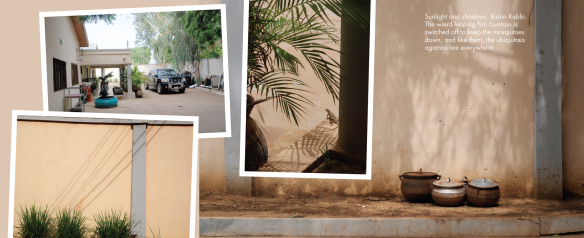 After freshening up, chicken rice and spinach is served, followed by water melon
After freshening up, chicken rice and spinach is served, followed by water melon The same wall of heat hits me after dark as I step outside to make my way to our apartment. By lamplight, I see one or two moths, but dozens of large cockroaches
The same wall of heat hits me after dark as I step outside to make my way to our apartment. By lamplight, I see one or two moths, but dozens of large cockroaches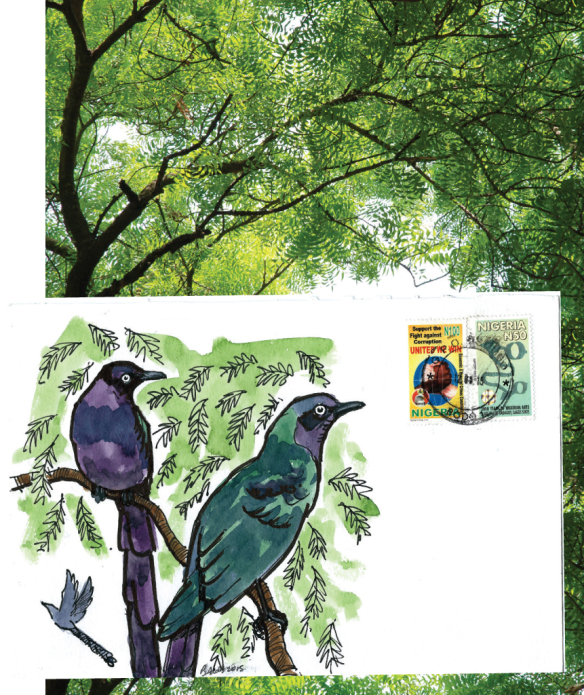 I was familiar with these birds from ‘The Handbook of Foreign Birds’, where they were described as not for the novice, and could be quite aggressive towards weaker inmates
I was familiar with these birds from ‘The Handbook of Foreign Birds’, where they were described as not for the novice, and could be quite aggressive towards weaker inmates
 Toyin grew up in Kaduna and worked in the family hairdressing business in the town.
Toyin grew up in Kaduna and worked in the family hairdressing business in the town.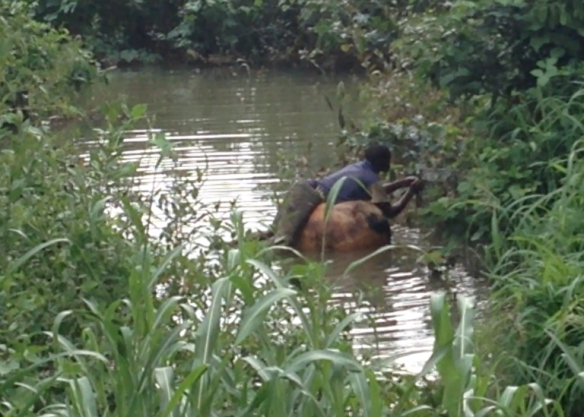 Being adventurous and naive in equal measure I opt for a short walk along the lush riverbank which entails climbing through the broken chain link fence, which I manage relatively gracefully, and largely because I hear some exotic bird calls and hope to catch a glimpse. Sadly their identity remains a mystery. We did come across a fisherman however, who seemed quite happy to show us his catch inside the hollow calabash he was carrying above his head, and to show how he uses it as a float while he paddles to check his nets. Any fish are placed inside the calabash while he paddles off to the next net. ‘Are there crocodiles in the river?’ I ask, mentally assessing the risk the fisherman is taking ‘Yes’ said Sam, adding after a short pause ‘…though for a Nigerian, a crocodile is more an opportunity than a danger.’ I look down at my shoes, imagining what that might mean for Lowo’s handbag trade.
Being adventurous and naive in equal measure I opt for a short walk along the lush riverbank which entails climbing through the broken chain link fence, which I manage relatively gracefully, and largely because I hear some exotic bird calls and hope to catch a glimpse. Sadly their identity remains a mystery. We did come across a fisherman however, who seemed quite happy to show us his catch inside the hollow calabash he was carrying above his head, and to show how he uses it as a float while he paddles to check his nets. Any fish are placed inside the calabash while he paddles off to the next net. ‘Are there crocodiles in the river?’ I ask, mentally assessing the risk the fisherman is taking ‘Yes’ said Sam, adding after a short pause ‘…though for a Nigerian, a crocodile is more an opportunity than a danger.’ I look down at my shoes, imagining what that might mean for Lowo’s handbag trade.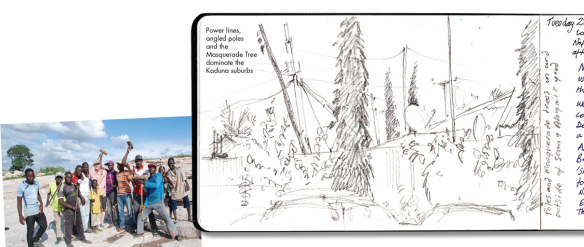
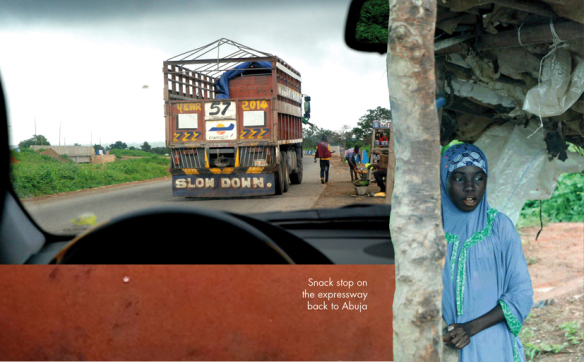 Sam and Abi are driving us back to Abuja this morning. We stop briefly for corn sticks roasted while you wait. Staying a few days with us until we leave for Birnin Kebbi turned out to be a happy decision, as we were able to spend a few more days in their good company while we figured out the best way of getting there, an internal flight or a nine hour drive.
Sam and Abi are driving us back to Abuja this morning. We stop briefly for corn sticks roasted while you wait. Staying a few days with us until we leave for Birnin Kebbi turned out to be a happy decision, as we were able to spend a few more days in their good company while we figured out the best way of getting there, an internal flight or a nine hour drive.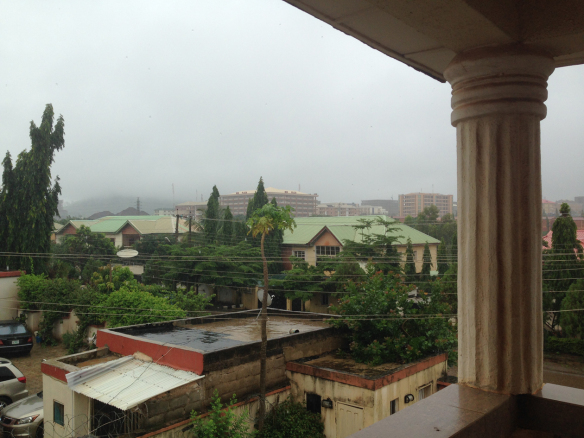 The swallows and swifts are not deterred for long. When the sun comes out, it’s blinding and hot. The Variable Sunbirds flit quickly to and fro on the flowers in the garden, the fire finches find seeds on the ground in the yard. The African Thrush sings loudly very like the European song thrush, with simple but fluid repeated phrases. I started the Moleskine sketchbook on the ‘plane, and already made some notes on the suburban birdlife for later.
The swallows and swifts are not deterred for long. When the sun comes out, it’s blinding and hot. The Variable Sunbirds flit quickly to and fro on the flowers in the garden, the fire finches find seeds on the ground in the yard. The African Thrush sings loudly very like the European song thrush, with simple but fluid repeated phrases. I started the Moleskine sketchbook on the ‘plane, and already made some notes on the suburban birdlife for later.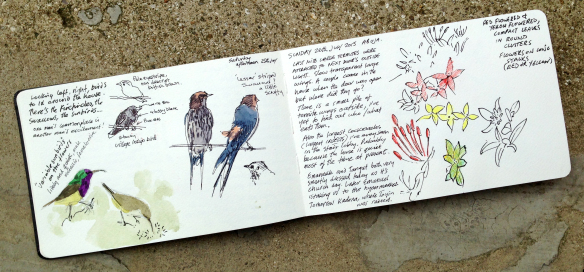

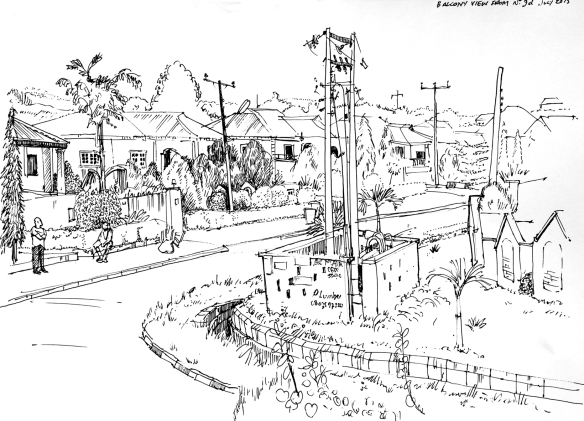 So, here we are again. Another rip roaring, roller coaster high energy ride for a few weeks through this fantastic country…just hope I can keep up…
So, here we are again. Another rip roaring, roller coaster high energy ride for a few weeks through this fantastic country…just hope I can keep up…

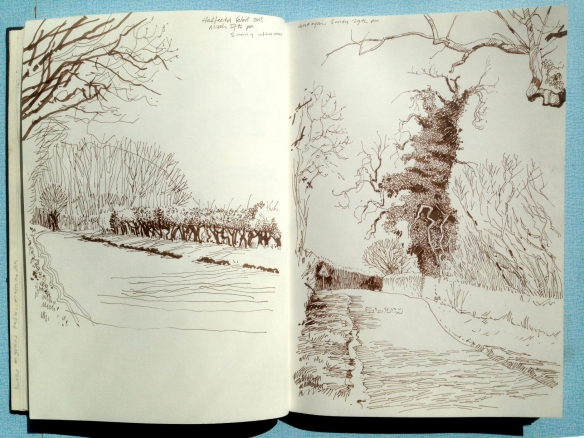
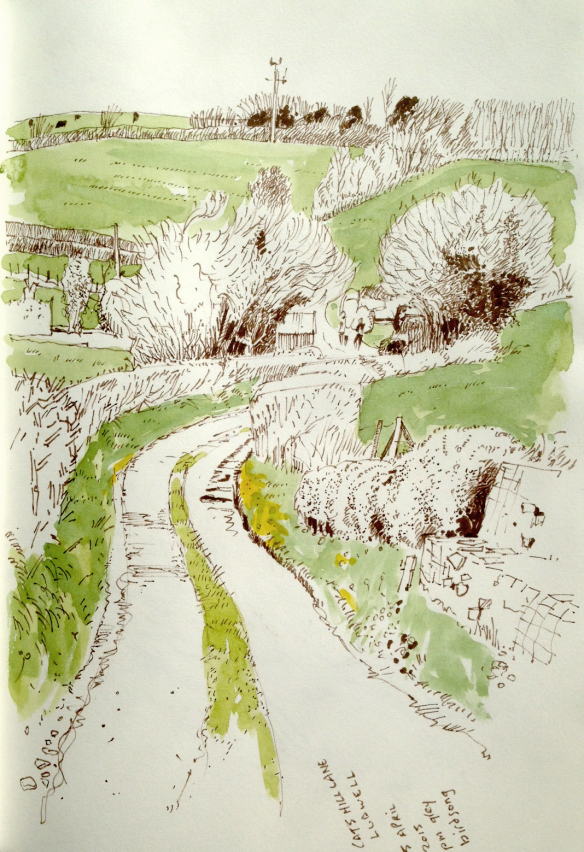

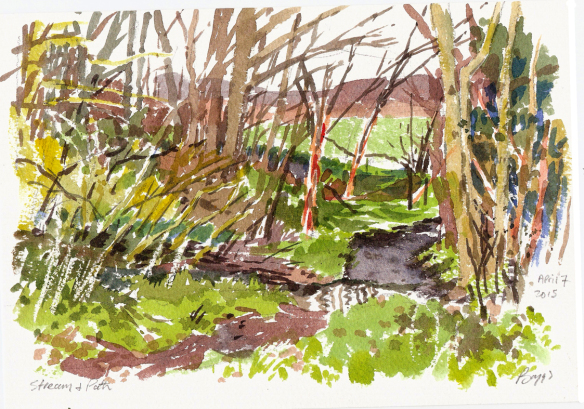
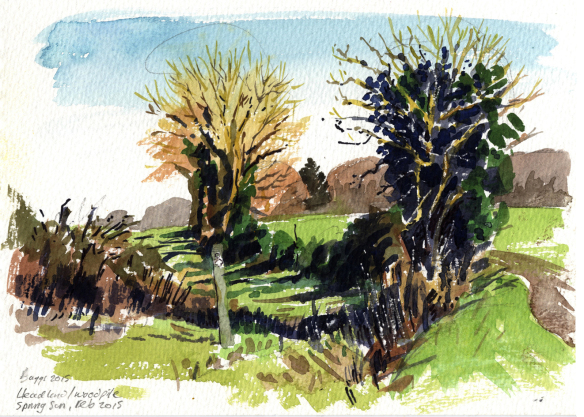 March 20th, late afternoon, a little weak sunshine and a cold wind. Still fully kitted out in hat, scarf and gloves (aiming to avoid any unnecessary discomfort) maybe I’m just getting old! This drawing is the same view from a little further to the right. I wanted to show the hedge curving uphill to the wood, from where a buzzard was mewing. Both of these were painted on the spot on 140lb paper.
March 20th, late afternoon, a little weak sunshine and a cold wind. Still fully kitted out in hat, scarf and gloves (aiming to avoid any unnecessary discomfort) maybe I’m just getting old! This drawing is the same view from a little further to the right. I wanted to show the hedge curving uphill to the wood, from where a buzzard was mewing. Both of these were painted on the spot on 140lb paper. The two sketchbook drawings below started out as felt-tip pen sketches and colour was added back at home. I like this method as it forces me to simplify things and the marks become more gestural and stylised. Also, I can’t seem to be able to “paint” landscapes indoors, I have to be out there, in the moment.
The two sketchbook drawings below started out as felt-tip pen sketches and colour was added back at home. I like this method as it forces me to simplify things and the marks become more gestural and stylised. Also, I can’t seem to be able to “paint” landscapes indoors, I have to be out there, in the moment.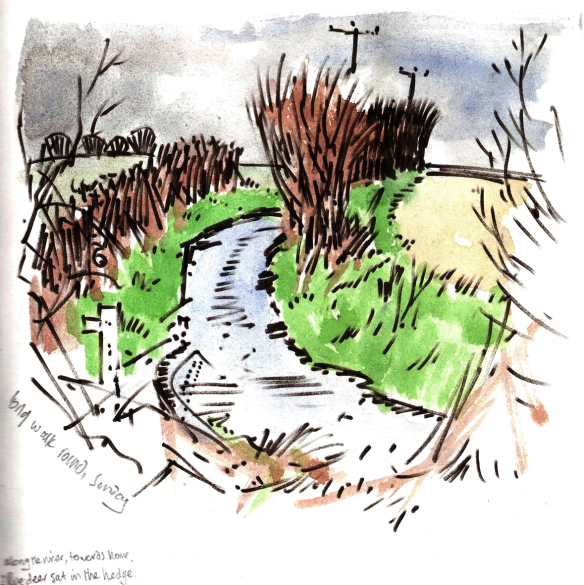
 This picture was painted on another cold afternoon, but there was some sunshine. It’s a painting of not much at all, but the rows of young broad beans sweeping across the field lent themselves to the cause well enough. Apart from being a memory aid, I do see the
This picture was painted on another cold afternoon, but there was some sunshine. It’s a painting of not much at all, but the rows of young broad beans sweeping across the field lent themselves to the cause well enough. Apart from being a memory aid, I do see the